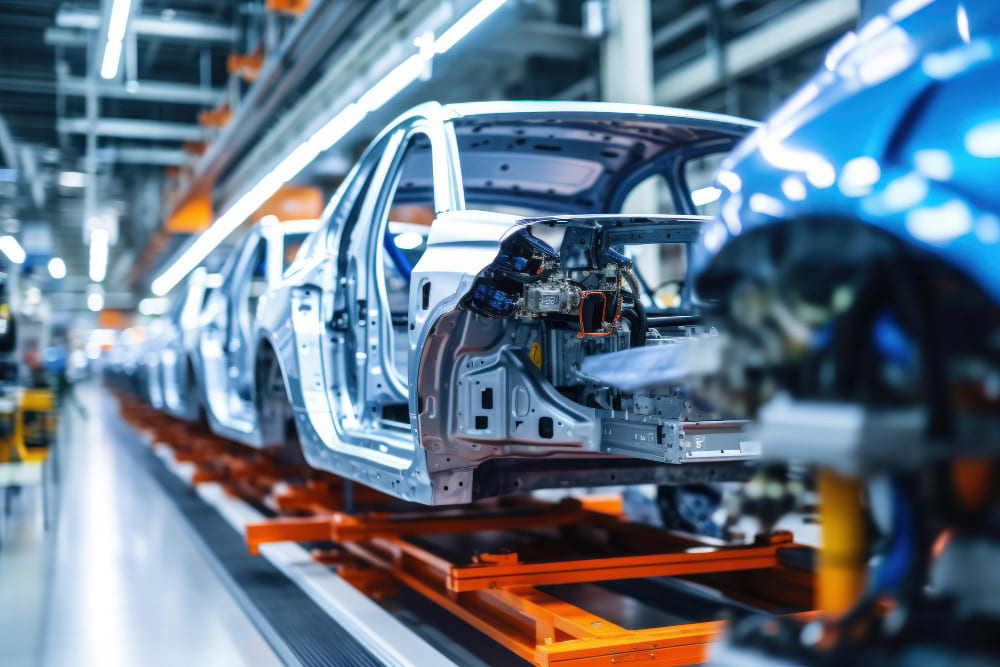The Evolution of Automotive Electronics
From basic electrical systems to advanced computerized networks, automotive electronics have come a long way. These systems are now integral to enhancing vehicle performance, safety, and user experience. The technology that powers automobiles has evolved with them to become increasingly sophisticated and demanding. Modern car electronics cover various functions, from infotainment and navigation to cutting-edge safety features and networking options. They go beyond simple engine and electrical system control.
Technologies like vehicle-to-everything (V2X) communication and advanced driver assistance systems (ADAS) are at the vanguard of this growth. Electric auto parts play a significant role in these advancements, offering more efficiency and reliability. For instance, Advanced Driver Assistance Systems (ADAS) increase road safety by facilitating communication between cars and traffic infrastructure, averting collisions before they occur, and enhancing the overall driving experience.
Advanced Driver-Assistance Systems (ADAS)
Examples of ADAS technologies include automated emergency braking, adaptive cruise control, and lane-keeping assistance. These systems monitor the environment around the car and help the driver stay in power by utilizing a mix of sensors, cameras, and software. By providing real-time feedback and intervention, ADAS reduces the likelihood of accidents and enhances driver confidence. Lane-keeping assistance, for instance, helps the driver stay within their lane by providing corrective steering inputs.
According to recent studies, vehicles equipped with ADAS features have significantly reduced accident rates. This not only contributes to the well-being of drivers and passengers but also helps reduce insurance costs and improve overall traffic safety. Integrating ADAS features is becoming increasingly standard as manufacturers aim to meet consumer demand for safer, more reliable vehicles.
Vehicle-to-Everything (V2X) Communication
V2X communication technology enables vehicles to communicate with each other, infrastructure, pedestrians, and the broader network. Because of this connection, real-time information can be shared easily, considerably boosting road safety, easing congestion, and increasing traffic flow. For example, V2X technology lets vehicles receive warnings about upcoming traffic signals, hazardous conditions, and even the presence of emergency vehicles, thereby allowing drivers to make informed decisions.
V2X communication is a proactive approach to driving information that promises to make roads safer and more efficient. V2X systems help prevent accidents and improve traffic management by reducing reaction times and providing advanced warnings. Implementing this technology will become essential to the infrastructure of smart cities as metropolitan areas get more crowded.
Sustainable and Efficient Automotive Electronics
The drive towards sustainability is influencing the development of automotive electronics. Developing trustworthy and efficient electronics is primarily responsible for the growing popularity of electric cars (EVs). Innovations in battery management systems, power electronics, and charging infrastructure are crucial for enhancing the range and performance of EVs. These systems improved energy storage and distribution, extending driving ranges and reducing charging times.
Manufacturers are also focusing on making automotive electronics more energy-efficient. This includes optimizing the performance of electronic control units (ECUs), which manage everything from power distribution to climate control, and integrating lightweight materials to reduce overall vehicle weight. By lowering energy consumption and improving efficiency, these advancements contribute to reducing vehicles’ environmental impact.
Internet of Things and Vehicle Connectivity
Connected vehicles are a vital component of the IoT ecosystem, where vehicles can communicate with each other and various smart devices and infrastructure. This connectivity offers numerous benefits, including predictive maintenance, real-time navigation, and enhanced entertainment options. For instance, a connected vehicle can alert its owner about potential mechanical issues before they become critical, ensuring timely maintenance and reducing the risk of breakdowns.
Real-time data from connected vehicles can help urban planners design more intelligent and efficient transportation systems. For instance, traffic light timings can be optimized to lessen congestion and improve travel times by using data on traffic from linked automobiles. The IoT ecosystem’s integration with connected cars creates a wealth of opportunities to improve urban transportation and the driving experience.
The Future of Autonomous Driving
The advancements in automotive electronics are paving the way for fully autonomous vehicles. Even though the technology is still in its early phases of exploration, autonomous driving has the power to alter how we travel drastically. Businesses are investing significant funds into research and development to address autonomous vehicles’ technological and legal challenges. These guarantee dependability, safety, and adherence to national and international laws.
Industry analysts predict that the widespread use of autonomous vehicles may result in major changes in urban mobility. For instance, it might make owning a personal car less necessary and even change public transportation. By lowering the overall number of cars on the road, autonomous vehicles have the potential to improve accessibility and efficiency of transportation while also reducing traffic and emissions.
Conclusion: Continuing Innovation in Automotive Electronics
The automotive industry is in a transformative era fueled by continuous innovation in automotive electronics. These advancements are unprecedentedly enhancing vehicle performance, safety, and user experience. Electric vehicles (EVs) exemplify this progress, with sophisticated electronics managing power distribution, battery systems, and regenerative braking. These technologies ensure that EVs are efficient, reliable, and capable of high performance. As battery technologies, particularly solid-state batteries, evolve, the efficiency and range of EVs are expected to improve significantly, making them even more practical for everyday use.
Additionally, progress in connectivity and autonomous driving is poised to revolutionize transportation in the future. Advanced sensors, machine learning algorithms, and high-speed data processors empower vehicles to navigate complex environments with minimal human intervention, improving road safety and increasing convenience.
Stay in touch to get more updates & news on Adviser Master!



